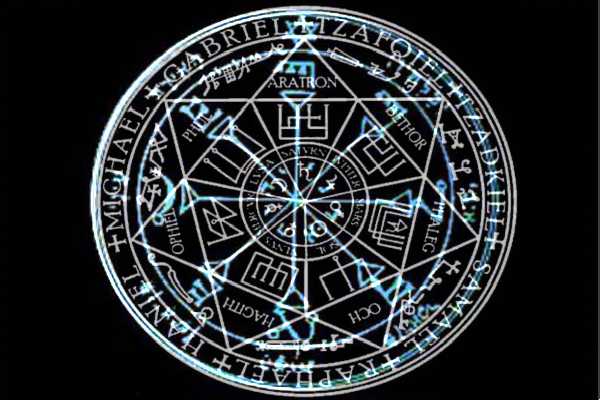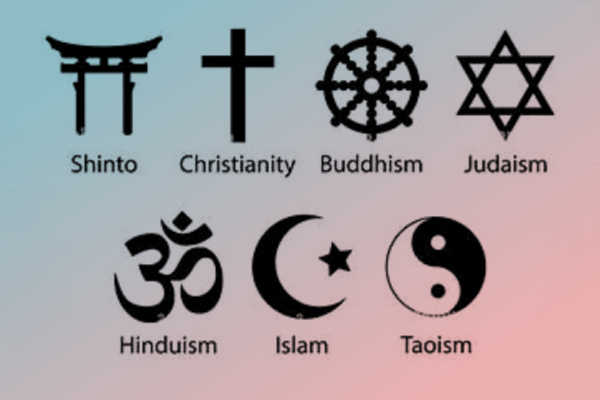Exploring the power of spiritual symbols is crucial. It helps us understand how they affect us. There are psychological triggers hidden in the meaning of ancient tribal emblems. If you don’t know what your triggers are and how to control them, others can use them to control you.
“This is an important point about symbols: they do not refer to historical events; they refer through historical events to spiritual or psychological principles.” — Joseph Campbell
The psychological principles that Mr. Campbell refers to are psychological triggers. These are keywords or symbols that evoke a strong emotional response when activated. These triggers are part of the story contained in the meaning of ancient tribal emblems.
The Meaning Behind Spiritual Representations
Words create images within the mind. However, the same term can create different images for different people. For example, the word apple reminds one person of a fruit tree. But for another person, it is the emblem of a large computer company. Therefore, controlling the meaning of the image or brand is so important.
Most people think of symbols as innocent objects. However, the meaning behind spiritual representations is not always innocent or benign. Words create pictures within the mind, which connect to memories and trigger fear and anger. Many famous stories contain the same central themes related to our primal instincts.
Psychological Triggers
Symbols and words are graphic designs that connect to our thought patterns, values, beliefs, memories, and dreams. They’re all tied together in a chain. These links are the psychological triggers, the secret levers that create thought chain reactions. It is possible to manipulate thinking by triggering these levers. Get the picture?
Spiritual symbols and rituals convey messages linking to psychological triggers. A positive psychological trigger may evoke feelings of compassion and love. However, a negative psychological trigger causes extreme distress. This reaction turns on the primitive survival mode. The survival mode is the sympathetic nervous system. It is also called the “fight, flight, or freeze” response (F3 response).
When the brain is in the 3F response mode, it produces a cascade of chemicals and neurotransmitters. These chemicals put our muscles in overdrive and reduce our pain response. The brain also cuts off the higher thinking centers to protect them from these chemicals. The result is that we can react with speed and even violence. It’s a response that supersedes our moral compass or critical thinking abilities.
In this stress response mode, we are vulnerable to groupthink manipulation tactics. These are the mind control tools of propaganda and hypnosis suggestions. If we encounter these tactics frequently, we will become susceptible to manipulation. So, exploring the power of spiritual symbols helps us take back control of our 3F response.
The Meaning of Ancient Tribal Emblems
A religious emblem is a symbolic representation that embodies several layers of meaning. Emblems are a way of showing camaraderie. They are similar to a brand, which marks ownership or the boundaries of territory.
Religions often have a variety of emblems. Many religions use clothing and hats to show their hierarchical rank. Military organizations also copy this system. Organized religions have much in common with military hierarchies; they have their own military forces.
The Vatican has its own army, the Pontifical Swiss Guard, established in 1506 under Pope Julius II. The Sikhs have their own military force, the Sikh Regiment. Israel has the Israeli Defense Forces (IDF) have some of the world’s most advanced military hardware. The Knights Templar is a military force dating back to the Crusades.
The meaning of ancient tribal emblems can change, and new layers are being added. However, these new layers of meaning don’t change the original intrinsic value. In fact, most religions and corporations choose their emblems because of their deeper meaning.
Controlling the Cultural Narrative
The benchmark of effective propaganda is in its ability to incite violence. If you can control the cultural narrative of a group, you can program people to be suicide bombers. How do you do this? You program a worldview that makes these acts acceptable. It’s the worldview that governs our thoughts and values. The more exposure people have to propaganda, the more likely they are to accept it.
Religious indoctrination is like boot camp. Systematic indoctrination reprograms your beliefs and values. It installs psychological triggers that prompt you to act in ways that would violate your natural moral compass. By exploring the power of spiritual symbols, we reveal these links. If we can identify the link, then we can remove it.
For instance, many people expose themselves to a large amount of unconscious programming by leaving the TV on. There is a lot of harmful propaganda which presents itself as news or religious programming. The more often you hear something, even if it is a lie, the more likely you are to believe it is true. This type of programming distorts thinking. Most of the time, people don’t know it’s happening.
The Cross
Take, for instance, the major symbol of the Christian faith, the cross. On the surface, it represents allegiance to the Christian faith. However, it is also a warning for others. Those under its banner are part of an elite group that protects its boundaries with violence.
The history of the cross stretches back across many pre-Christian cultures. It is common for Christian believers to superimpose a figure being tortured to death on the cross. In ancient times, they would crucify heretics on trees. The same with criminals and those suspected of being vampires or possessed by evil spirits. Then, they buried them at the crossroads to confuse their spirits. The cross represents the crossroads of eternity. Even if you do not know about the ancient roots, the picture of a person crucified conjures our existential fear. (2)
The sign of the cross was also a way to distinguish believers from non-believers. You needed to be able to perform the cross correctly, perform a hand mudra at each point, and recite the proper invocation. There was also a proper countersign. If you failed to pass this litmus test, you were subject to further questioning or worse.
The Global Symbolism of the Hamsa
By exploring the power of spiritual symbols, we discover new details about the emblem and ourselves. We may not have known why we had an emotional reaction to something like the Hamsa.
The Hamsa is a symbol we see used in many cultures. Judaism calls it the hand of Miriam, the sister of Moses. Christianity calls it the hand of Mother Mary. In Islam, it is the hand of Fatima, Muhammad’s daughter. The origins of this symbol go back to ancient Mesopotamia and Egypt. In these cultures, the Hamsa is used as a protection against evil spells, explicitly pointing to The Evil Eye. (3)
The “All-Seeing Eye” is one of the key themes here. You can find this symbol in many cultures. Christians call it The Eye of Providence. However, it originates before recorded history. Some say it comes from Egypt and the Eye of Horus. (4)
There are several secondary symbols here as well—for instance, the rainbow, spiral, dots around the perimeter, and the hand. The meaning of these will depend on the cultural context. The rainbow is an excellent example of how meaning changes based on cultural context. The definition differs depending on who is using it.
The main message of the Hamsa is that spiritual awakening is available to everyone. It’s an invitation for people of all backgrounds to blossom spiritually. Depending upon your worldview, you may see a different message. The global symbolism of the Hamsa shows us that not all emblems contain nefarious meanings.
Exploring the Power of Spiritual Symbols
Religions and other organizations use highly emotional rallies to trigger emotional responses and get you to do what they want. Do they need money? No problem; God needs you to donate today! So, the meaning behind spiritual representations often has ulterior motives.
Religions control the meaning of ancient tribal emblems that they hold sacred. Many use rites and rituals as symbols of power to codify the emotional triggers. Finding these triggers is easy for those who use groupthink manipulation tactics because over 70% of all adults have experienced at least one traumatic event. (1) Trauma makes people more susceptible to emotional triggers.
Decoding the Meaning Behind Spiritual Representations
You can do this exercise alone, but it works best with a partner—ideally, someone on the same quest. Find someone you can talk with openly without filtering your answers. Be sure to jot down your discoveries in your journal. Things may come up that don’t seem important until after you’ve had time to ponder your answers.
1. First, find several sources
Use different authors and publishers. Using diverse resources will help you develop the best overall meaning and show the symbol’s general historical significance. Bestiaries are rich sources for this type of data (see below for information about this source).
2. Next, use the Enneagram personality profile
Find your personality type and instinctual stack. Then, discover the connections between historical meaning and your fears.
3. Last, use the repeating question exercise to explore your fears.
The goal is to drill down below the superficial answers. You want to find the connections between symbols and your fear triggers. Examples of repeating questions include, “Tell me how this fear shows up?”
It’s important to realize we tend to give superficial answers first. But, by repeating the question, you’ll eventually get down to the truth about the fear. You might spend 5 minutes on just one question to get to the root. So, be patient.
In Conclusion
Exploring the power of spiritual symbols helps us recognize how they trigger our emotions and what we can do to prevent this. We learn that words are symbols that may have several levels of meaning.
Some words, characters, and logos are powerful cognitive links. The study of symbols can reveal the motives behind the image. For example, the typologies of rebirth and resurrection are potent symbols in our culture. They are the motives that sell afterlife beliefs.
Resource and References
The Bestiaries
You can trace the meaning of almost every symbol to the ancient texts known as Bestiaries. (5) Their availability varies. These texts contain the root associations for animals, plants, and rocks. Similarly, these texts include fictional creatures or anthropomorphic beings. You can find links to many superstitions of Western theology. Sometimes, they show how the meaning changed. After all, no one knows the exact origin of oral traditions.
In the Middle Ages, the Bestiaries became popular as curiosities. Because of their popularity, private collectors saved many of these works from mass book-burning events. Christians burned any books they deemed evil or demonic. Heck, they are trying to do it again now.
The Catholic Encyclopedia
The Catholic Encyclopedia is the most comprehensive resource on Catholic history and Christianity. It’s a reference text for internal Church use, so it reveals some interesting facts not meant for public disclosure. The 1907 version is enlightening. Volumes 13 and 14 of the 15-volume set discuss where the Church got its symbols, doctrines, and dogma.
(1) How Science Changed My View on Trigger Warnings, Psychology Today
(2) The Catholic Encyclopedia and International Work, Vol. 4, 1908
(3) Bulfinch’s Mythology, Illustrated Edition, Thomas Bulfinch 1978 Edition
(4) An Illustrated Encyclopaedia of Traditional Symbols, J. C. Cooper, 1987
(5) The Bestiary. Wikipedia.


